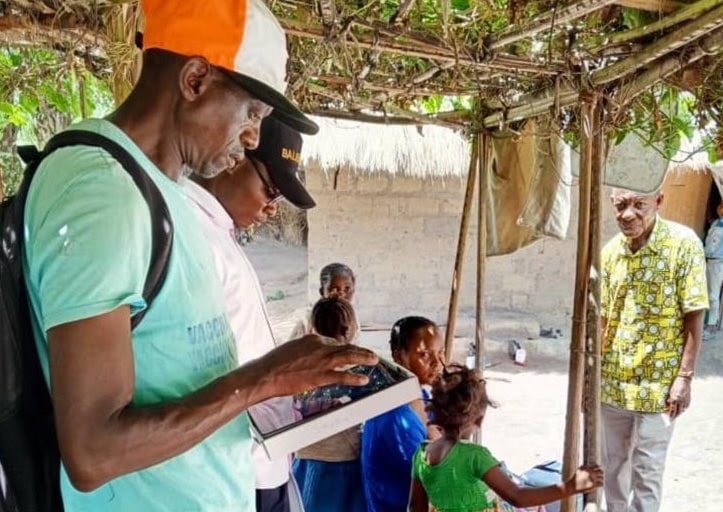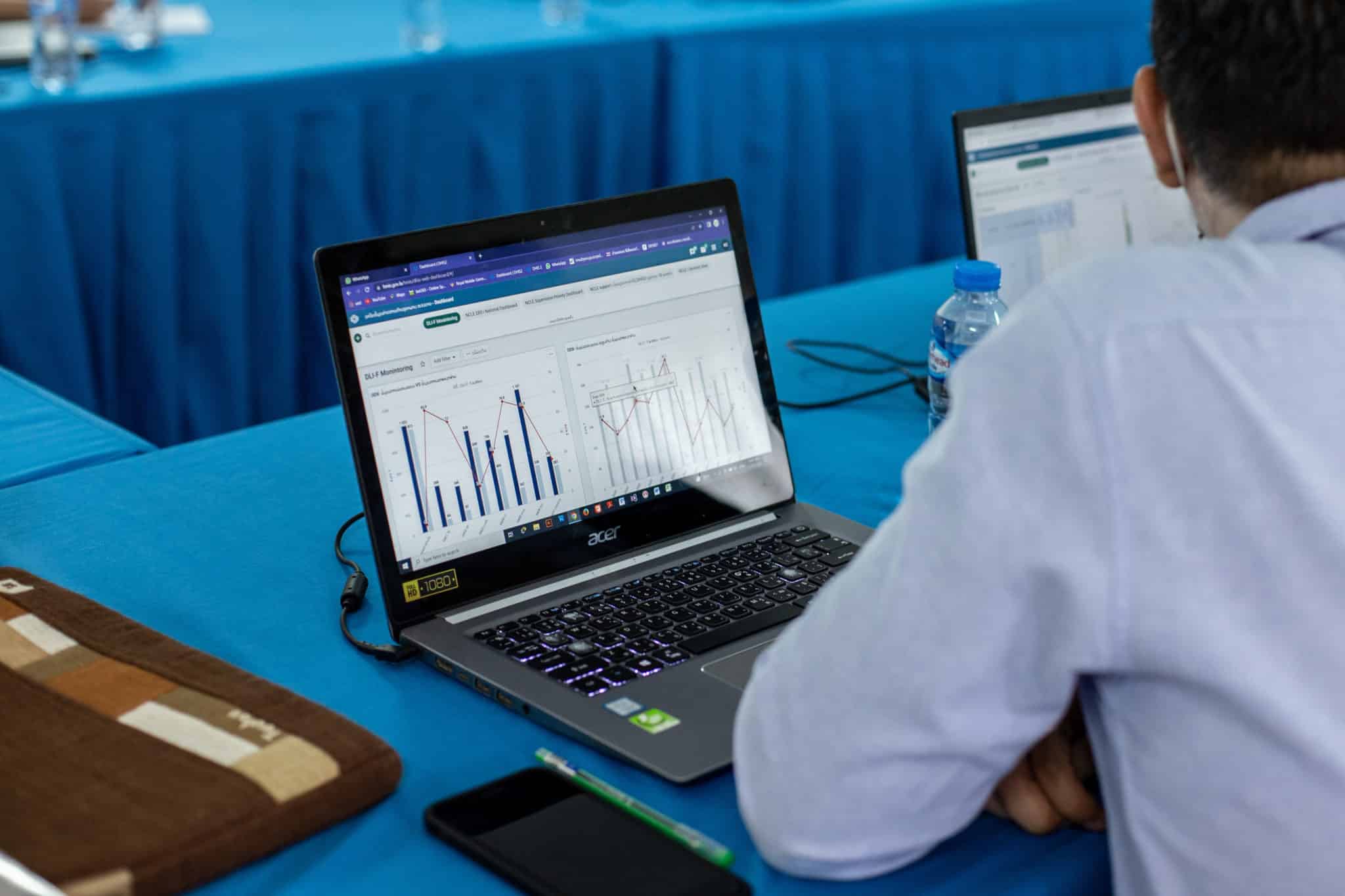Managing COVID-19 surveillance and vaccination programs with DHIS2 in Ethiopia
HISP Ethiopia supported the national task force with Tracker implementation and custom app development to digitize COVID-19 testing and vaccination systems, reducing workloads and wait times and improving data quality
Ethiopia first began implementation of DHIS2 as its Health Management Information System (HMIS) in 2016, and achieved implementation at national scale in 2019, just before the COVID-19 pandemic struck. Working at the center of the digitalization team under Ethiopia’s Emergency Operations Center (EOC) – a taskforce established by Ethiopian Public Health Institution to tackle COVID-19 pandemic – HISP Ethiopia helped evaluate, customize, develop, and implement COVID-19 surveillance tools that assist EOC teams.
With the backing of Ethiopia’s Ministry of Health, DHIS2’s Tracker application was selected as the main platform for COVID-19 surveillance. As vaccines for COVID-19 became available in 2021, Tracker and aggregate data in DHIS2 were also used to manage Ethiopia’s electronic vaccination registry. In both implementations, HISP Ethiopia worked with local stakeholders to identify challenges and develop custom solutions to augment DHIS2’s built-in functionality. Between these two systems, Tracker has been used to manage electronic records for millions of people in Ethiopia, making COVID-19 testing and vaccination programs more effective.
Supporting electronic COVID-19 testing systems with DHIS2 and custom apps
In Ethiopia’s COVID-19 testing system, Tracker was used to manage case registration, sample collection, result notification, and hospital admission and discharge routines, including daily surveillance of the number of ICU beds/oxygen beds available and in use. These system configurations were based on the standard DHIS2 COVID-19 surveillance metadata packages published by HISP UiO and customized to meet local needs. However, the taskforce soon determined that standard Tracker functionalities were not sufficient to address all of their needs.
One example was the need for a means for testing labs to enter results data in bulk, rather than searching for, opening and entering each case (TEI) individually. To address this challenge, the digitization team developed a custom laboratory reception app. This app allows lab workers to accept batch tests from sample collection teams, linking each test with the correct organisation unit, program, TEI and barcode. When a test result is ready, lab users simply scan the barcode and type either “N” or “P” and the system automatically updates the corresponding event in DHIS2 with a negative or positive result. The individual tested is automatically notified of their test result via SMS, while positive test results also trigger an automated notification to the COVID-19 response team. This innovation helped achieve significant reductions in workload and test response turnaround time – reducing data entry for test results from several minutes to only seconds – while also improving data quality.
In addition to the lab reception app, the digitization team also developed several additional custom applications and integrations to streamline COVID-19 testing processes and support digitization goals. These include:
- Middle layer app: links and updates result status obtained from event data to TEI attribute data
- Custom import/export app: allows users to export data to a pare-formatted excel template to support standard work practices
- SMS notification: notifies individuals of negative test results and provides daily test results summary to EOC leadership including the Minister of Health
- Certificate app: public facing portal app where interested parties can check the validity of a traveler’s COVID-19 test certificate using a QR code
- Integration with third-party systems such as Home-based Intensive Care (HIC) and PCR testing machines
Combining these apps with Tracker greatly simplified the work of the EOC taskforce teams, helping Ethiopia respond effectively to the COVID-19 pandemic. Their work with these systems also gave HISP Ethiopia and MoH partners valuable experience with Tracker that helped prepare them for the next challenge: digitizing COVID-19 vaccine systems.
Using Tracker as an electronic COVID-19 vaccination registry and to monitor AEFI
Ethiopia received its first shipment of COVID-19 vaccines from the COVAX initiative in March 2021, a delivery that included 2.2 million doses. At that time, the country did not yet have a digital system for tracking vaccinations, which meant that information on the first round of vaccinations – totaling more than a million doses – was captured on paper or in Excel files. Thanks to the success of Tracker for COVID-19 surveillance, a pilot project using Tracker and the DHIS2 COVID-19 vaccine delivery metadata packages was launched, beginning in a small number of facilities in Addis Ababa.
This pilot was successful, leading to a national-scale rollout of Tracker as Ethiopia’s electronic vaccine registry. This allowed MoH and EOC stakeholders to use DHIS2’s analytics and reporting tools to monitor the progress of the vaccination campaign and plan follow-up actions. By March 2022, more than 20 million people had been vaccinated in Ethiopia with a total of more than 28 million doses. The system includes a digital certificate component that allows for the generation of vaccine certificates for travelers. DHIS2 is also used by health authorities to track cases of Adverse Events Following Immunization (AEFI), which are connected to vaccination records in Tracker to aid understanding of potential linkage to comorbidities.
Local DHIS2 capacity to support, develop and sustain innovative systems
The success of Ethiopia’s digitization team in deploying DHIS2 and related tools to support COVID-19 surveillance and vaccination relied on the DHIS2 expertise of HISP Ethiopia. The team leveraged their connection to the global HISP network and DHIS2 community to access the latest DHIS2 tools, metadata packages and best practices, their technical capacity for app development, and their years of experience supporting Ethiopia’s national HMIS, which prepared them to design and implement innovations with DHIS2 to address local needs. This is a good example of how critical local capacity building is to long-term sustainability, both to support routine system use and response to unforeseen challenges.
Read more about HISP Ethiopia’s work on COVID-19 on the DHIS2 Community of Practice and watch their presentation from the 2021 DHIS2 Annual Conference.

